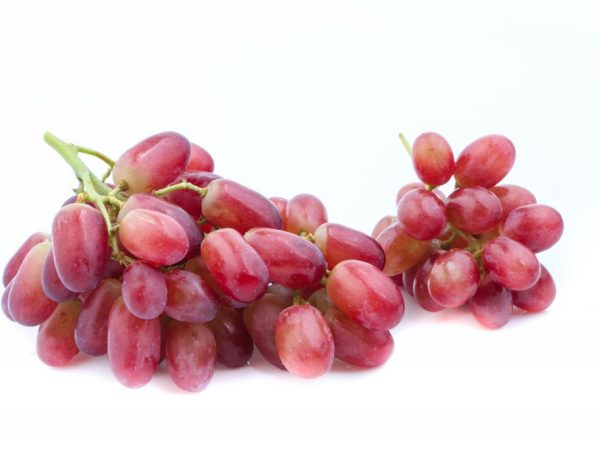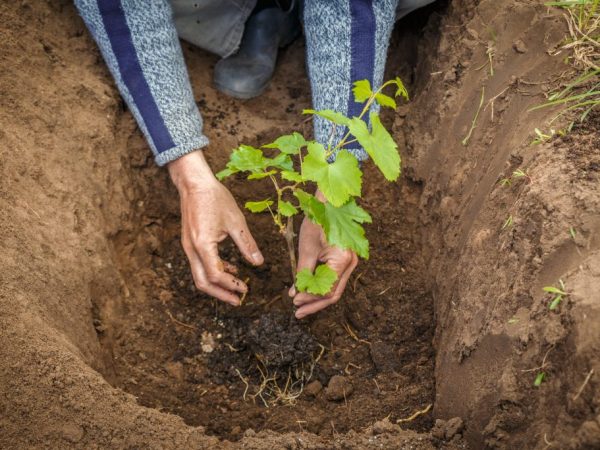Description of Jaguar grapes
The Jaguar grape is one of the early crops that yield the harvest in early July. This variety is considered ideal for those who wish to harvest large crops and not spend a lot of time caring for the plant.

Description of Jaguar grapes
general characteristics
Jaguar grapes are classified as first-generation hybrids. It was withdrawn in the middle of the 20th century and is already included in the State Register of the Russian Federation. Ideal for growing in the central and southern regions of the country.
According to the description, the Jaguar grape variety has small bushes, only 3-4 m. The crown is wide, often located on the surface of the earth. Flowering occurs with both female and male flowers. The leaves are dark green, the surface is matte, rough. The leaf plate has small denticles at the edges.
- the weight of the bunch is 1000-1500 g;
- each berry weighing about 20-30 g, has a pale red color, pinkish flesh;
- seeds are small, in small quantities;
- berries are oval in shape, with a small elongated nose at the end.
Usage and taste
Due to the high concentration of sugar and ascorbic acid in the composition, the taste is sweet and sour. This product contains a large amount of other vitamins and minerals that can improve human health.
The Jaguar grape variety is classified as a universal crop. It is not only suitable for fresh consumption. It is often used for making preserves and homemade dessert wine. Good storage and transportation parameters are noted. Bunches are stored in the basement for 2-3 months.
Growing rules
You need to plant a crop in well-lit areas, protected from the wind. Planting should be carried out from the south side of the house, where the sun's rays will fully warm the plant. It is worth planting in the spring, before the buds begin to develop.
Before planting the Jaguar grape variety, a planting hole should be prepared (50 cm deep). The direction of the hole should be from the north to the south, so that the plant, in the future, is evenly warmed up by the sun's rays. They keep a distance of 4 m between the bushes, and 2 m between the planting rows.

The grapes should be planted in a sunny place.
A metal pipe is dropped next to the hole, to which the seedling is then screwed (using a wire). Such a support will protect the seedling well from the wind and will not let it deform. A nutrient mixture (6 kg of humus, 40 g of potassium nitrate and 30 g of superphosphate) is poured onto the bottom of the pit. After that, place the seedling inside and sprinkle it tightly with earth. At the end, abundant watering is carried out using 20 liters of warm water.
Care measures
Caring for this variety is simple.
The plant needs abundant watering, but also does not tolerate waterlogging of the soil. The optimal watering interval is 2 weeks. During this time, the soil will have time to dry out. Each time, at least 20 liters of warm water are poured under each bush.
After that, it is worth loosening the top layer of the soil in order to remove the crust.Remove weeds to reduce the likelihood of pests.
Pruning is done in the spring. 2 years after planting, the first pruning is carried out, during which all shoots are removed, except for the central and two lateral ones. In the future, all diseased branches should be removed. Pruning involves removing antennae and shoots so that no more than 8 eyes remain on them.
Top dressing is carried out as needed. If the flowers are poorly tied on the plant, it is worth adding 25 liters of potassium nitrate solution (30 g per 10 liters of water) under the root. To increase the weight of the bunch, use a superphosphate solution (50 g per 10 l of water). With an interval of 2 years, irrigate with a solution of humus (3 kg of fertilizer per 10 liters of water).
Fight against insects and diseases
The main diseases are fruit rot and late blight. A solution of colloidal salt (30 g per 10 liters of water) will help get rid of late blight. In the fight against fruit rot, spraying with a manganese solution (4 g per 5 l of water) will help.
The main pests are midges and rodents.
- To fight against midges is a solution of Bordeaux liquid (5 g per 10 liters of water).
- An effective drug against rodents will be Regent (30 g per 10 l of water). As a prophylaxis for rodents, a fence of stones, up to 30 cm high, is laid around the main trunk.
Conclusion
The Jaguar variety is a versatile variety that is used by humans in all areas. Children and adults love to feast on products of this type, and high quality wine is obtained from the berries. By adhering to planting and grooming guidelines, it is much easier to grow high quality produce.


